1. 介紹
如標題所見,我在使用IDEA debug ConcurrentLinkedQueue的Offer方法時,發生了下面的情況。
程式碼如下:
ConcurrentLinkedQueue<string> queue = new ConcurrentLinkedQueue<>();queue.offer("A");queue.offer("B");
第一種打斷點的地方:
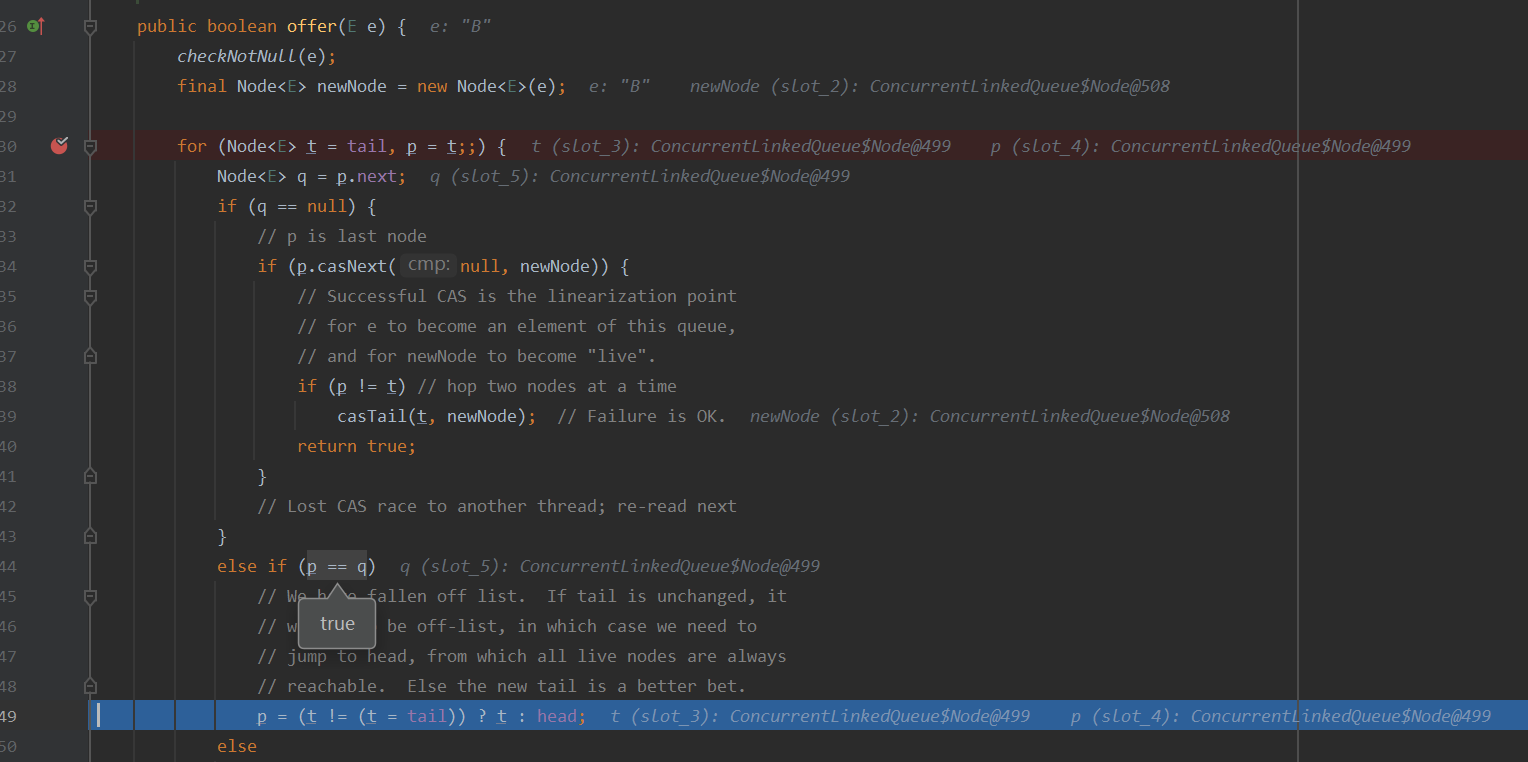
第二種打斷點的地方:
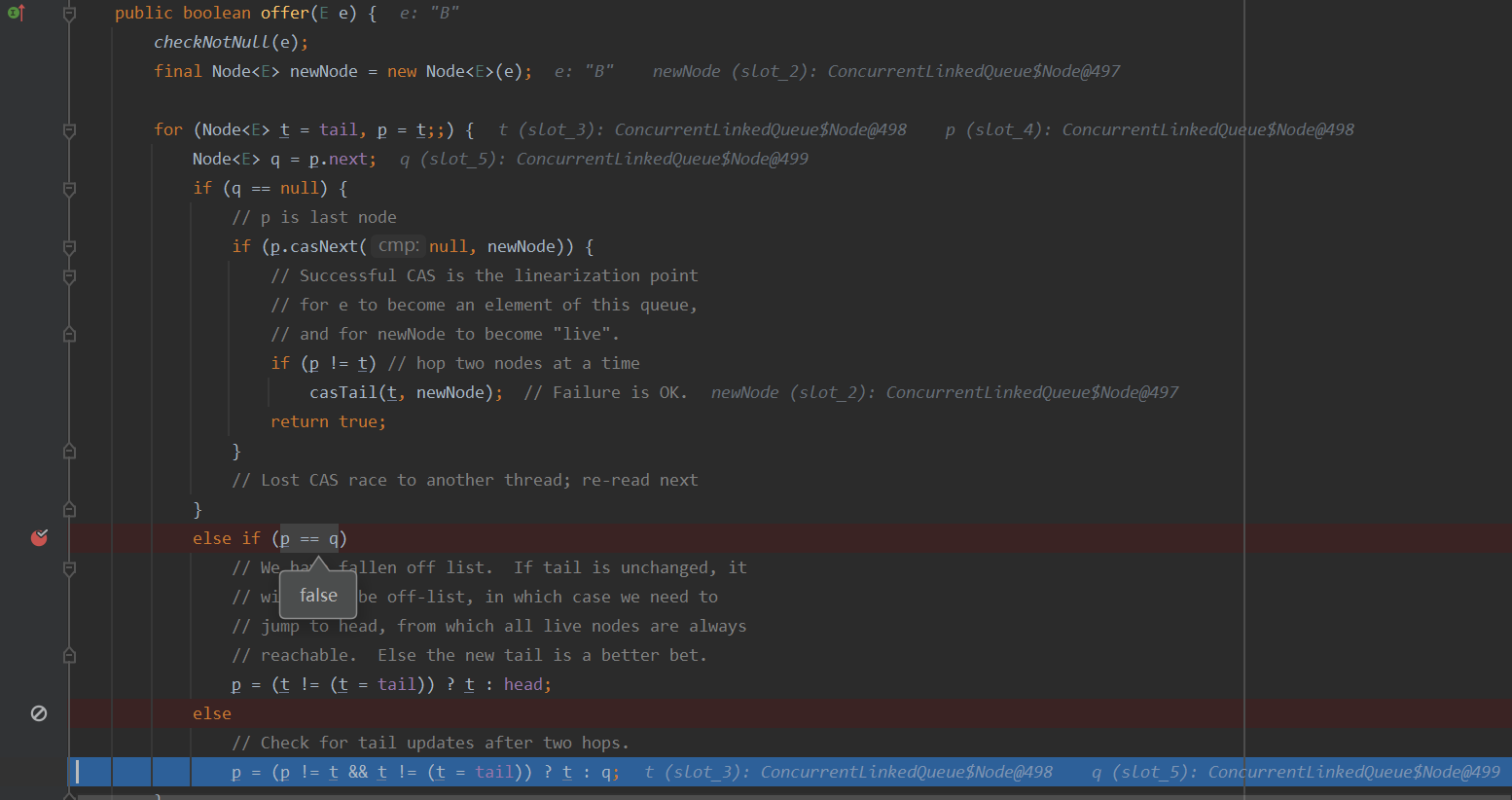
如你所見,相同的地方,打斷點的地方不同,導致程式碼執行的路徑都不同,當時我也是迷茫的。
2. 解釋原因
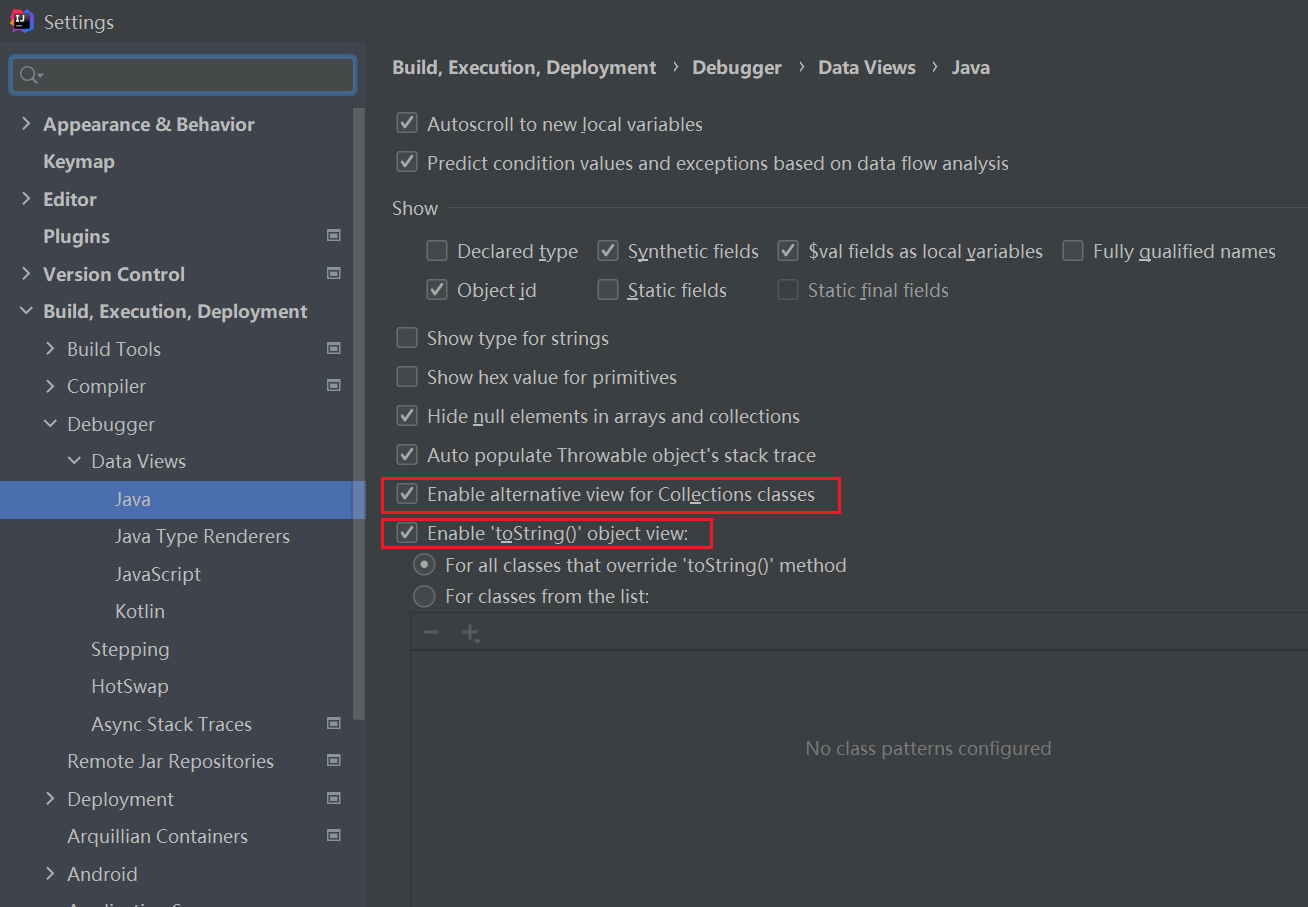
IDEA 預設會開啟以上兩個配置
- Enable alternative view for Collection classes; Select this option to display contents of classes that implement Collection, Map, or List in a more convenient format (for example, to display each map entry as a key-value pair).屬於集合的類以更加方便的格式展示其內容(例如,展示map的entry就以鍵值對展示)
- Enable toString() object view;Allows you to configure which classes use the result of toString() as their display value.展示值以它們toString()的結果展示。
debug時,程式碼之外,額外執行的只有toString,第一個配置也會呼叫toString,所以我們定位到了罪魁禍首是toString。我們看看ConcurrentLinkedQueue的toString
2.1 toString
我們去看看哪個類中實現了toString



最後找到了AbstractCollection中實現了toString
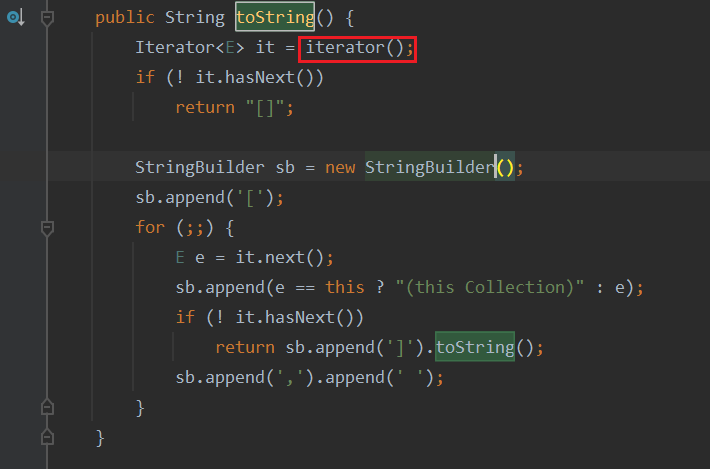
iterator(), 在ConcurrentLinkedQueue有實現。
在iterator()的實現中,跟這篇文章有關的方法是advance()
移動到下一個有效節點並返回 item 以返回 next(),如果沒有,則返回 nul
private E advance() {lastRet = nextNode;E x = nextItem;Node<e> pred, p;// 第一次進來,nextNode還沒被賦值,此時預設值為nullif (nextNode == null) {// 這裡就是關鍵了p = first();pred = null;} else {pred = nextNode;p = succ(nextNode);}for (;;) {if (p == null) {nextNode = null;nextItem = null;return x;}E item = p.item;if (item != null) {nextNode = p;nextItem = item;return x;} else {// skip over nullsNode<e> next = succ(p);if (pred != null && next != null)pred.casNext(p, next);p = next;}}}
返回連結串列第一個活躍的結點(非空,指向的item不為空),如果連結串列為空就返回null
Node<e> first() {restartFromHead:for (;;) {for (Node<e> h = head, p = h, q;;) {boolean hasItem = (p.item != null);if (hasItem || (q = p.next) == null) {// 更新頭結點updateHead(h, p);return hasItem ? p : null;}else if (p == q)continue restartFromHead;elsep = q;}}}
這篇文章也提到過,updateHead()方法。JAVA併發(4)-併發佇列ConcurrentLinkedQueue
更新頭結點,將之前的頭結點的next指向自己。
final void updateHead(Node<e> h, Node<e> p) {if (h != p && casHead(h, p))h.lazySetNext(h);}
2.2 debug
我們按照最上面的程式碼且按照第一種打斷點的方式重新debug,下面會以圖片形式展示整個過程。
- 初始狀態,此時A已進入隊成功
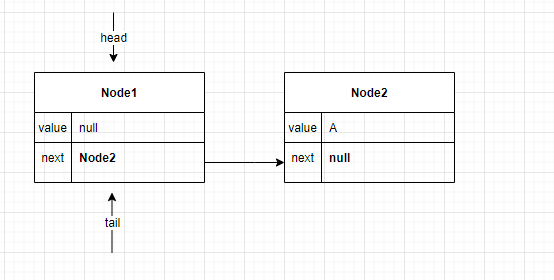
- 我們知道了,使用IDEA debug時,會呼叫類的toString()方法,此時呼叫toString()方法後,狀態如下
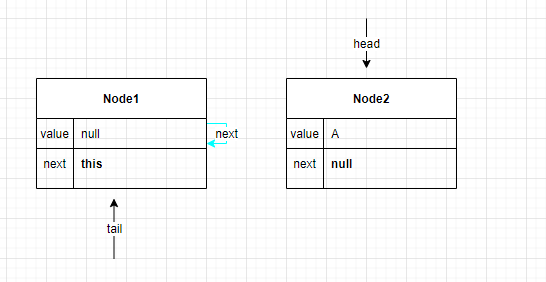
此時,Node1的next被修改成指向自身。
這裡也是網上很多部落格會認為,第一次入隊後,會把第一個節點的next指向自身的原因,其實並不會的。
- 當我們debug到queue.offer("B")時,此時執行到offer()方法中的else if (p == q)時,就為true了
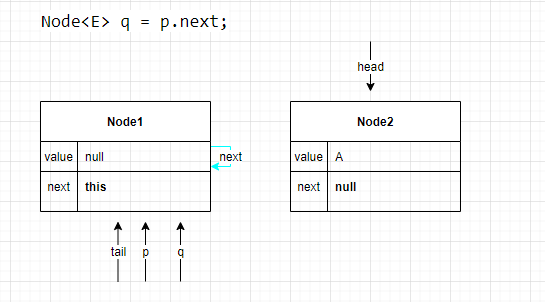
3. 總結
經過了上面的分析,大家應該知道為什麼會出現文章開頭的問題了吧。也許你會迷迷糊糊的,因為涉及到了ConcurrentLinkedQueue的原始碼分析。
那我就用一句話,告訴你原因吧,當使用IDEA debug時,預設那兩個配置是啟用的,兩個配置會呼叫toString,我們應該清楚toString是否被重寫;是否影響debug某個類時,程式碼的執行路徑。
可能你會覺得是IDEA的bug(我當時也這樣認為),但是我們先看看下面取消兩個配置前後的debug情況
取消配置前

取消配置

一眼就可以看出,取消配置前在debug時,更加直觀。
可能你會認為是Doug Lea的bug(反正我不敢這麼想。當然這句話只是開玩笑啦)。
我只是讓大家記住IDEA在debug時會存在這樣的問題,大家也可以在評論區告訴其他同學,除了ConcurrentLinkedQueue外,還有哪些類,在哪種情況下會存在這樣的問題
可能大家會有疑問,在debug時,呼叫了toString,那是否影響後續的執行。不會的,因為tail節點會被修改的在後續的執行中。可以結合上面那篇部落格,就很清楚了。
4. 參考
- IDEA debug ConcurrentLinkedQueue 的時候踩的坑 --- 給我提供了問題所在
- Customize views